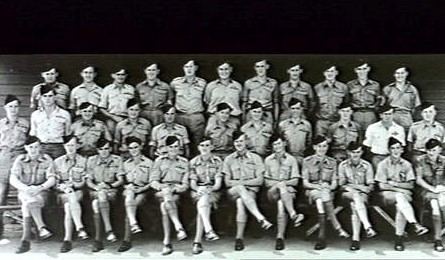Active 1941 (1941)–1946 Part of No. 1 Training Group | Allegiance Australia | |
 | ||
Role Intermediate/advanced flying training | ||
No. 6 Service Flying Training School (No. 6 SFTS) was a flying training school of the Royal Australian Air Force (RAAF) during World War II. It was formed in August 1941, and commenced flying the following month. Responsible for intermediate and advanced instruction of pilots under the Empire Air Training Scheme (EATS), the school was based at RAAF Station Mallala, South Australia, and operated Avro Anson and Airspeed Oxford aircraft. The school formed a reserve squadron for Australia's defence after the outbreak of war in the Pacific in December 1941. Having graduated over 2,000 pilots, No. 6 SFTS completed its final training course in September 1945, and was re-formed as Care and Maintenance Unit Mallala in January 1946.
History
RAAF aircrew training expanded dramatically following the outbreak of World War II, in response to Australia's participation in the Empire Air Training Scheme (EATS). The Air Force's pre-war flight training facility, No. 1 Flying Training School at RAAF Station Point Cook, Victoria, was supplanted in 1940–41 by twelve Elementary Flying Training Schools (EFTS), eight Service Flying Training Schools (SFTS), and Central Flying School (CFS). While CFS turned out new flight instructors, the EFTS provided basic training to prospective pilots who, if successful, would go on to an SFTS for further instruction that focussed on operational (or "service") flying. The course at SFTS typically consisted of two streams, intermediate and advanced, and included such techniques as instrument flying, night flying, advanced aerobatics, formation flying, dive bombing, and aerial gunnery. The total duration of training varied during the war as demand for aircrew rose and fell. Initially running for 16 weeks, the course was cut to 10 weeks (which included 75 hours flying time) in October 1940. A year later it was raised to 12 weeks (including 100 hours flying time), and again to 16 weeks two months later. It continued to increase after this, peaking at 28 weeks in June 1944.
No. 6 Service Flying Training School (No. 6 SFTS) was formed at RAAF Station Mallala, South Australia, on 25 August 1941, under the control of No. 1 Training Group. Its inaugural commanding officer was Wing Commander N. Brearley. The school was reported to have cost £233,000–240,000 to establish. Inclement weather kept the airfield out of action until 19 September, when the first nine Avro Ansons arrived. The initial course of flying training commenced four days later. Delays owing to rain, fog and high winds, however, remained a constant hindrance throughout the school's existence. In addition to Ansons, the school operated Airspeed Oxfords. At least 11 fatalities were recorded during training flights. Two Ansons collided in mid-air on 14 October 1941, killing both pilots in each plane. Two other pilots died in separate Anson crashes in May 1942 and July 1943. All four crew members were killed when another Anson crashed on 23 September 1943. The school suffered its last fatality on 27 March 1944, when an Oxford went down with its pilot.
Following the outbreak of the Pacific War in December 1941, the RAAF began classifying aircraft at SFTSs as Second Line (Reserve) elements in the defence of Australia. No. 70 (Reserve) Squadron was formed at No. 6 SFTS, and was tasked with army cooperation, meteorological survey, and photo reconnaissance duties in the Adelaide vicinity. The RAAF rationalised its EATS facilities in March 1942, dividing the personnel and equipment of No. 3 Service Flying Training School at RAAF Station Amberley, Queensland, between No. 6 SFTS and No. 1 Service Flying Training School at RAAF Station Point Cook, Victoria. The last course at No. 6 SFTS concluded in September 1945, by which time 2,178 pilots had graduated. The school disbanded on 1 January 1946, re-forming as Care and Maintenance Unit (CMU) Mallala. CMU Mallala was one of 40 such units across Australia responsible for the storage of surplus aircraft awaiting sale, scrapping or stripping for spare parts. From June 1947, the base facilities constructed for No. 6 SFTS were occupied by RAAF units supporting the Long Range Weapons Project at Woomera Rocket Range.
